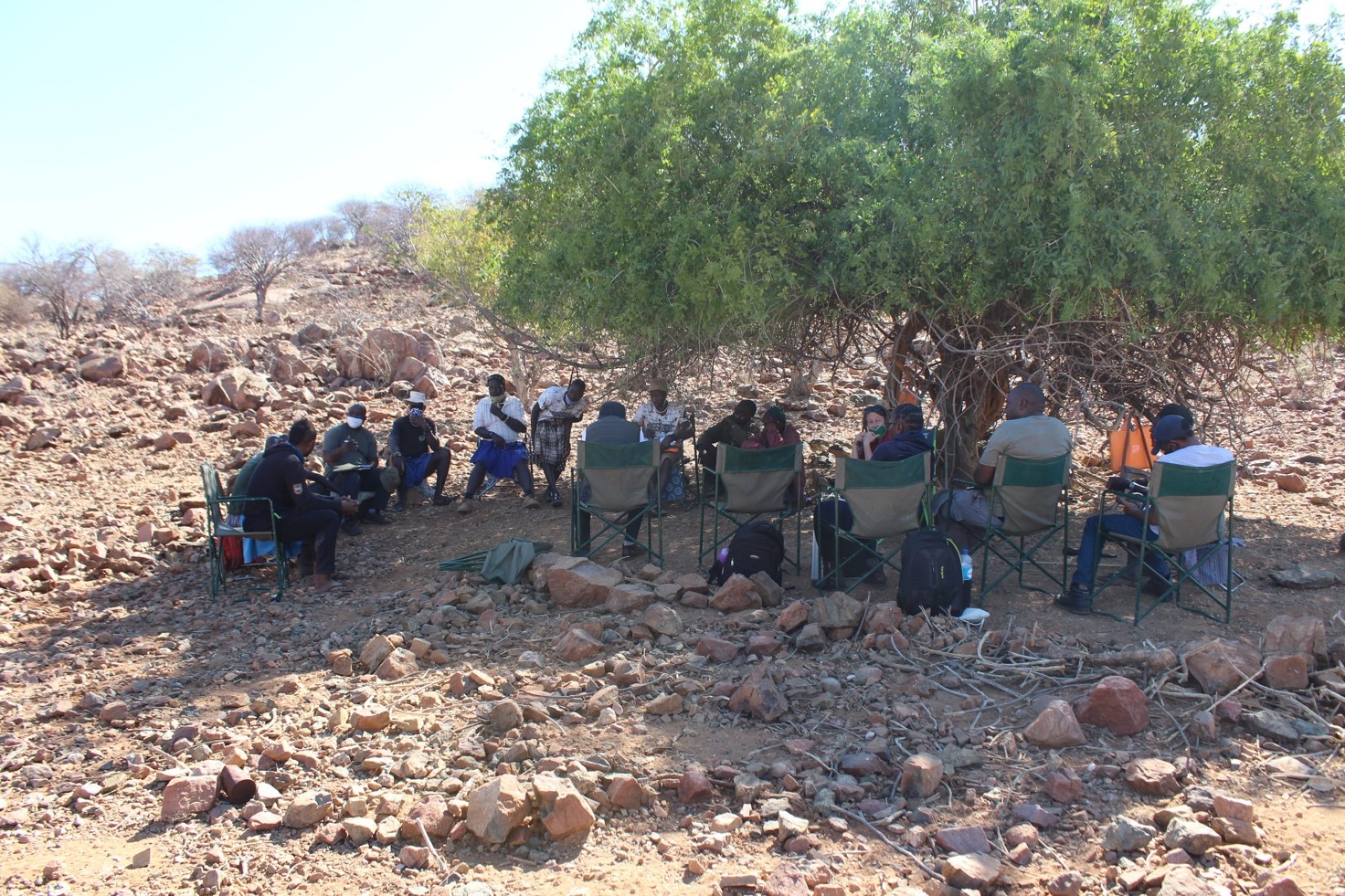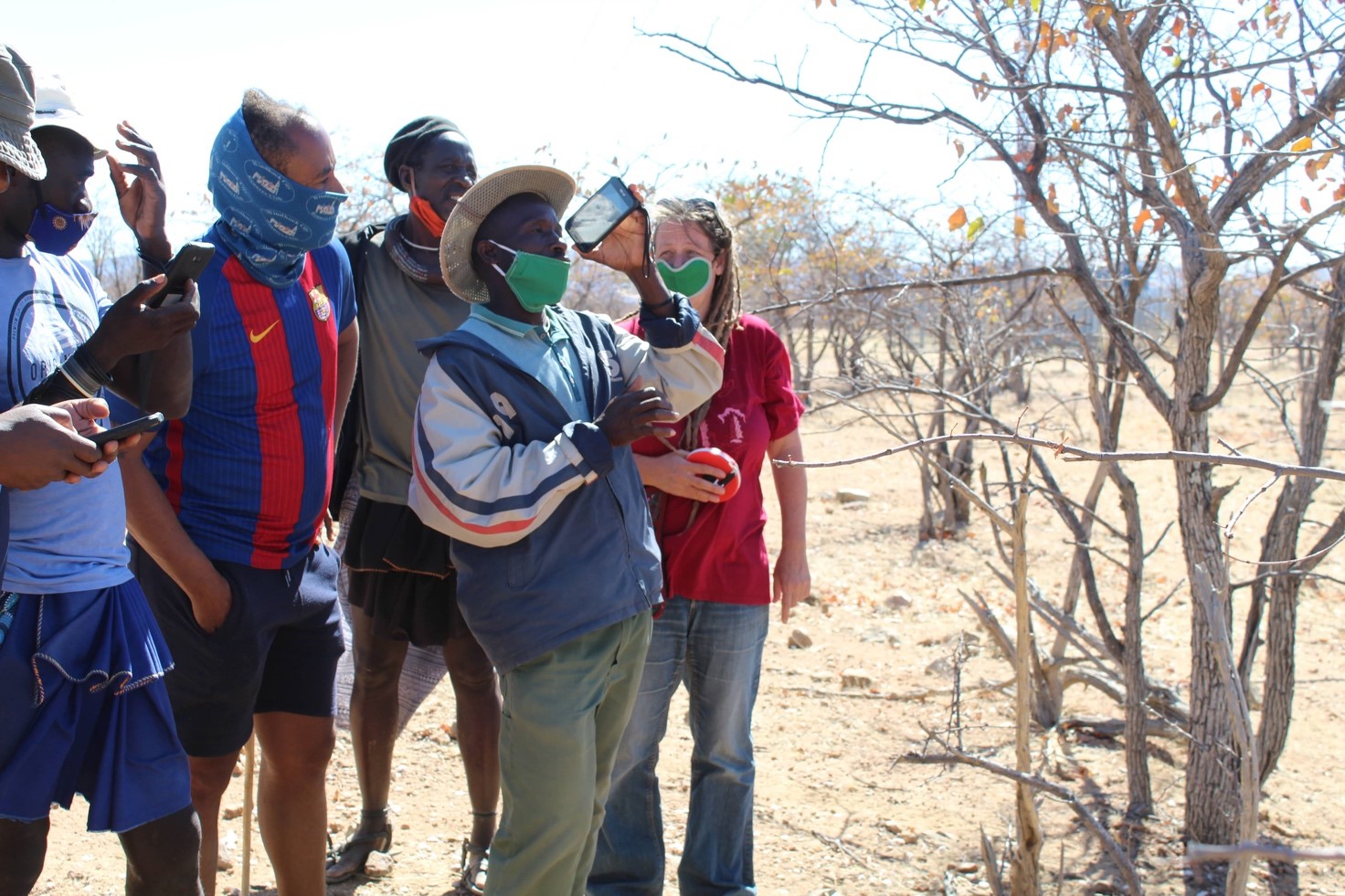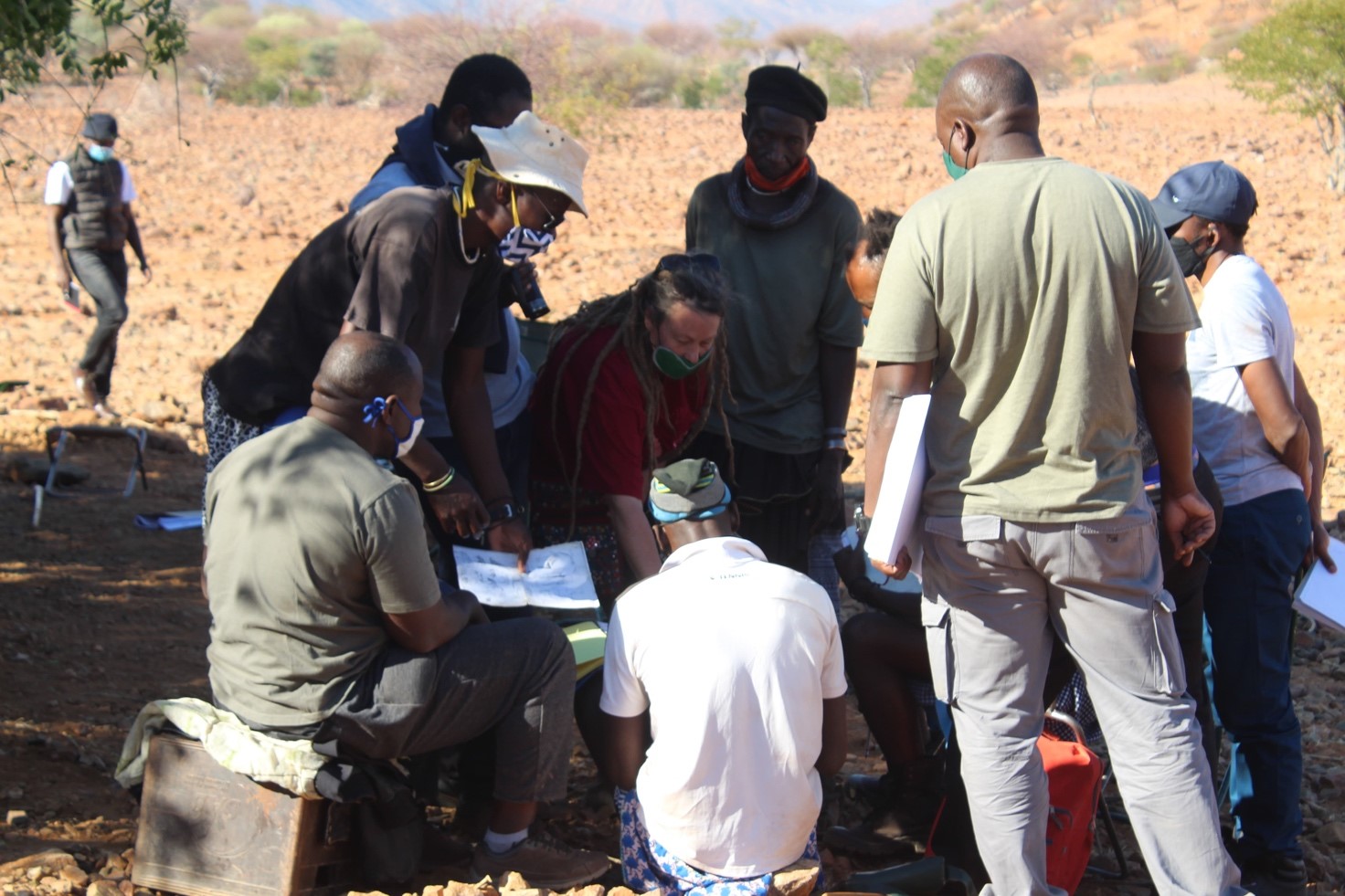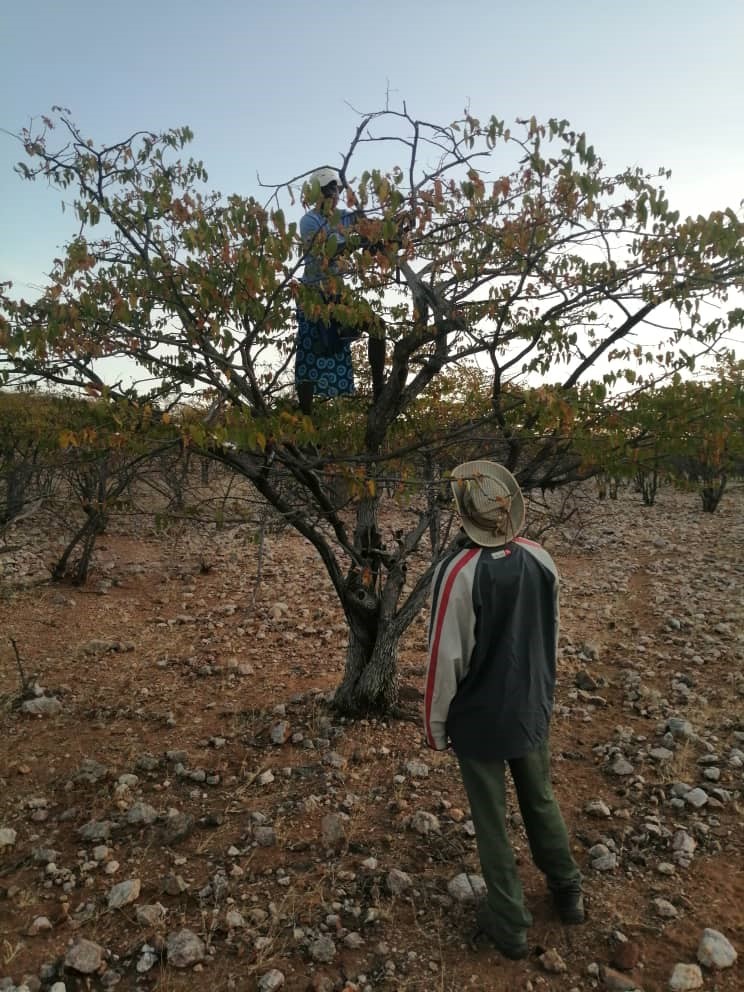Co-design at Epupa and Okanguati
As part of technology exploration and co-design, researchers led by Professor Heike Winschiers-Theophilus travelled to Epupa and Okanguati between the 20th - 26th of July. The primary objective of the trip was to co-design technology with local paraecologists, as well as explore some of the tools developed by the SCIONA researchers. Additionally, we wanted to gain an understanding of the local knowledge preservation and data collection, both for plants and wildlife.
During an ethnobotanical walk led by the paraecologists, we tested a plant data collection application prototype for systematic plant data collection. During the walk, the community members used data collection tools developed under the SCIONA project to record information about the plants encountered during the walk. Thereafter, the community members gave feedback on their experiences, which will be used to adapt the tools to fit the local community context.
During a participatory mapping, community members and SCIONA researchers explored how to best represent their environment on maps. There was a lot of insight about geographical representation gained during this activity. We also set up of camera traps in collaboration with the local community game guards who indicated the best locations for placing the cameras. An infrastructure assessment was carried out whereby the current network communication infrastructure was assessed at the community meeting points. The network assessments were conducted using an Open Signal application tool loaded onto a mobile phone, together with 4G Mobile devices to determine the signal reception coverage and quality of the connection. The overall outcome and evaluation of these network activities was to conclude on the desired suitable location and building for the establishment of the Community Monitoring Digital Hub that is going to host the required information and communication technology infrastructure for the communities
The trip allowed our newest students to be exposed to the SCIONA study area, after a long lockdown, as well as establish relations with the community members. The community members are open to continuous long-term collaborations as equal partners in research and development
Author(s): Chris MuAshekele




